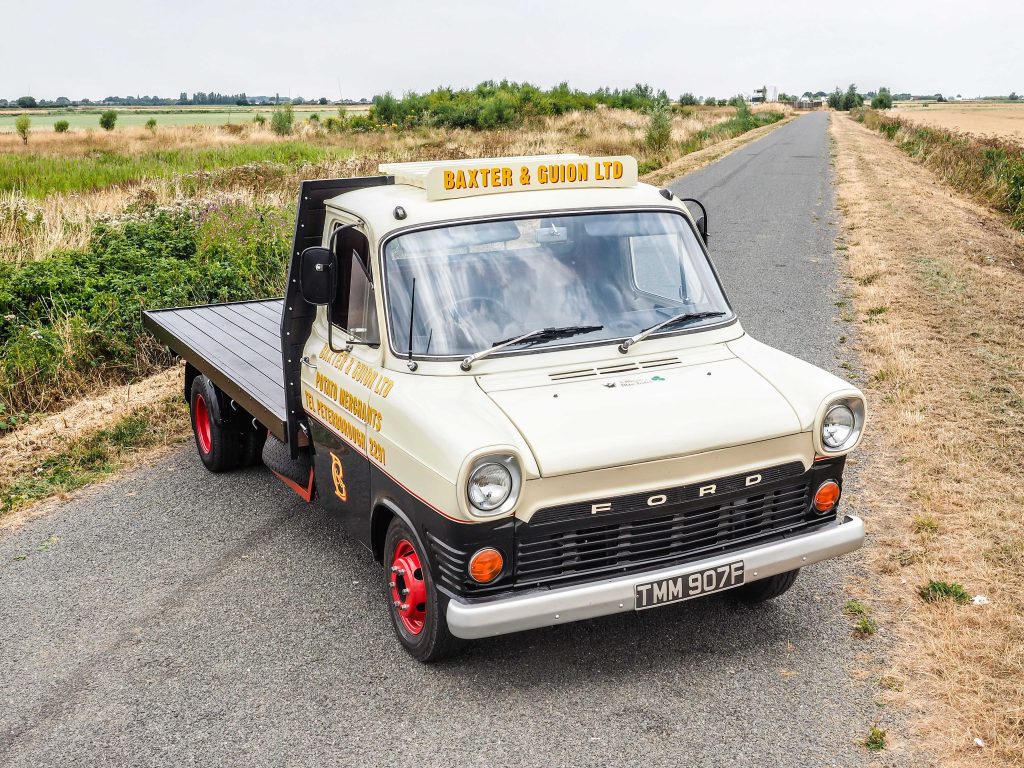
Pt1: Back in 1965, Ford’s Transit transformed the 12-35cwt van market. Peter Simpson begins an in-depth analysis..
Whenever a new vehicle is introduced, it’s not unreasonable to expect it to be an improvement on its predecessor, and while automotive history contains more than a few instances of new cars not really doing that, the overall picture with commercial vehicles is a bit more positive, with very few replacements being a step back. Occasionally however, a vehicle comes along which is such a massive improvement on what went before that it transforms the entire market. One such was without doubt the Ford Transit range, which celebrates its 60th anniversary this year.
The Transit really was everything that a van needed to be – huge payload thanks to a broad track, faster than anything else on the road, almost car-like to drive and a massive range of factory-supplied body styles including SWB and (very) LWB panel vans, minibuses and crew buses, pick-ups and more, plus of course chassis-cab and chassis/scuttle options for specialist bodywork. Within months of its arrival in October 1965 arrival, the Transit was pretty-much everyone’s first choice, but especially of those who would drive the vans themselves rather than buying for employees to use.
And talking of driver comfort/convenience, Ford even offered a de-luxe Transit. Called the Custom, this came with chrome bumpers, hubcaps, a white grille centre and, most important of all, a heater as standard.
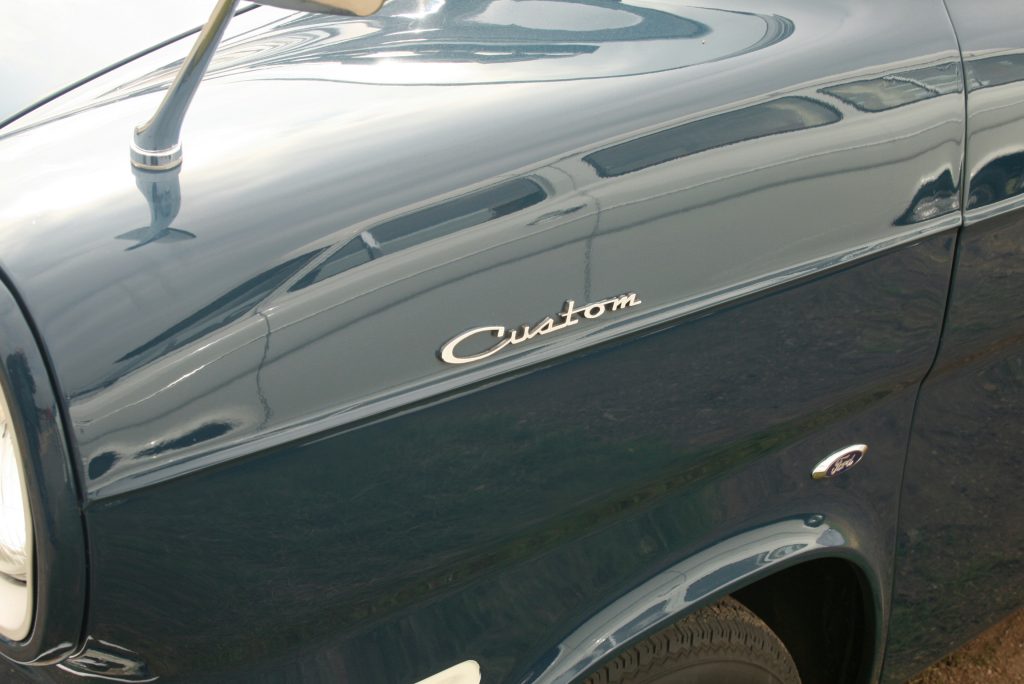
In the beginning…
The Transit story really starts in 1959. At this time, Ford and Britain and Ford of West Germany (with a manufacturing plant in Ghent, Belgium) were operating as totally separate entities, each with its own range of vehicles which has absolutely nothing in common. They didn’t even share nuts and bolts, as Ford Germany used metric fixings but Ford of Britain was still imperial. Henry Ford II (aka ‘Mr Ford’), then in his early 40s so relatively young in senior management terms, noticed, on a visit to Paris, that a Ford dealership contained a Ford of Britain Thames 400E and Ford of Germany Taunus FK1000. In other words, Ford was competing with itself and doing so within a Ford showroom! Additionally, although Renault sold fewer vans than Ford, the Ford total being split meant Renault could claim France’s best-seller accolade.
From an American perspective this clearly nonsense, and Mr Ford was keen to bring the two operations together. And at the time, the best ‘vehicle’ for doing this was the 12-15cwt van. The 400E and FK1000 were both getting a bit long in the tooth, and while from a publicity perspective a car as the first combined project might have been better, Ford of Britain were busy with the Cortina project, and Ford of Germany were working on a new Taunus car.
Van first
So, it was decided that the first pan European project should be the new van. Apart from anything else, that way the potential economies of scale were at least as big as for cars, but if the whole co-operation thing went belly up it wouldn’t be such a high-profile failure. Failure of a combined British and German project might sound unlikely in 2025, but 1959 was only 14 years after WW2 had ended, and most working-age people in both countries would have fought (each other) in the war.
In fact, these ‘problems’ showed up pretty-much immediately, and Ford of Britain and Ford of Germany were utterly unable to agree who would take the lead. To break the stalemate, it was decided that both firms would prepare studies/proposals which would be presented to Ford’s American senior management who would make the final decision.
The Ford of Britain team was led by Sir Patrick Hennessey, at the time Ford’s Chairman, working alongside Arthur Molyneux, his Product Planning Manager. Ford were great believers in carrying out proper market research to find out what customers actually needed and one of Molyneaux’s first pieces of market research was watching vans being loaded at a local builder’s merchants. He spotted than 4ft wide boards such as plasterboard and chipboard wouldn’t quite fit between the rear arches; a particular problem when loading plasterboard in the wet. So a distance between wheelarches of at least 48in was needed.
Advantage Britain…
This gave Ford of Britain a big advantage as they already had a rear axle design. This needed extending by just 8ins in total (or 4in per side) to fit under a body of this width. Molyneux also interviewed the transport manager of United Dairies. At that time UD ran a fleet of 200 Bedford CAs, mostly on daily milk delivery rounds. Before the Transit, the CA was generally considered to be the market-leader in the 12-15cwt van category. In fact it had been ground-breaking when introduced, but that was back in 1952. It wasn’t, however, without its weaknesses. UD management identified that young drivers were constantly damaging the independent front suspension by crashing into and over kerbs. Manual gearbox failures weren’t uncommon. Other issues included too-light steering and batteries that weren’t up to the constant stop-starting needed in multidrop delivery.
Molyneaux himself identified a couple of important features including the option of sliding access doors. These were VW’s patent, but due to expire in 1963. Additionally, at a time when most in vans were very basic, a comfortable and well-upholstered high-backed driver’s seat was needed. This was to be suitable for long days and long distances at the wheel. He also came up with the idea of making SWB and LWB versions and a way of making the latter by adding extra panels rather than replacing.
The name Transit was also settled in 1959. This was one area where the Germans won, as they had been using that name since 1953.
Ford backs Britain
The meeting to decide between Britain and Germany as the lead for the new design was held on January 9 1960. This was in front of more than 40 of Ford’s worldwide top brass, plus both teams.
The Germans went first with a six-page proposal to make low-cost improvements to the FK Taunus. By contrast Ford of Britain’s description of their plans ran to 50 pages. Ford’s management had a genuine choice; develop and improve the existing product, or try something new.The decision came quickly. Following team GB’s presentation, Sir Terence Beckett suggested it was time for lunch, at which point Molyneux chipped in. “I would just like to remind you that even if this plan is agreed today, it will take five years to produce the first vehicle.” At this point Henry Ford II asked “what do you need to get started?” Molyneux replied “Ten million pounds, to build three prototypes.” ‘Mr Ford’ then replied “would you like my personal cheque young man?” And that was it; Ford GB was to lead the development of the new van…
It’s important to remember, however, that Ford’s management were not choosing between two vehicles at this stage. Rather, they were deciding whether the British or German sides should take the lead in designing a ‘Common Van’. Once Ford of Britain took the lead, it became known internally as ‘Project Redcap.’
All new
From the start it was clear that to work, the new van had to be truly new. Nothing could be carried over from the Thames or Taunus. In the event a few Thames-derived switches were used for the first five months of production until December 1965. Ford went for a lightweight construction. A wide track (to take those plasterboards between the rear arches) meant a beam-type front axle could be used. This eliminated the weakness in the Bedford CA Van
One CA feature was, however used, albeit in much-modified form. To maximise loadspace and minimise engine noise in the cab, the engine went in front of the driving compartment,. Unlike on the CA, however, the whole engine was contained in front of a flat bulkhead.
This did, of course, make the engine bay fairly short. This wasn’t an issue however, as Ford was planning to use a V4 engine as the base power unit. Ford of Germany already had such a unit which had been used in the Taunus from 1962. Ford of Britain had been working on its own V4 and V6 variations on the same engine. This engine was known as the Essex due to its designer being based there. The V4 Essex engine was more powerful than Ford of Germany’s, and
British-built V4 Essex engines were of 1.7 and 2.0litre capacities. These were the same as the German V4s, though the latter were completely different. At first, only the 1.7litre petrol engine was offered, but from January 1968 the 2.0litre version became an option. The V6 Essex was also offered from 1966 on SVO (Special Vehicle Options) Transits for the emergency services, and MoD. In other words, for applications where speed was important but economy (or rather lack of it..) was not.
Unexpected differences
Engines were not, however, the only components that ended up being different on British and German-built Transits. The problem with Henry Ford IIs overall plan for the same van to be built in both factories was that each used component suppliers in their own country. For example, Ford GB fitted Lucas electrics but Ford of Germany used Bosch. Then there was the question of metric or imperial fastenings. In time Ford GB moved over to metric. Some component standardisation was achieved by persuading component manufacturers to make parts which shared common dimensions and fitting points. It wasn’t, however, until the mid-1970s that country of origin didn’t need to be specified in the parts lists.

Perkins Power
Back in the UK, however, there was need for another power unit, a diesel. Here, Ford were in the same position as Rootes and GM/Vauxhall in not having a suitable in-house unit. In fact, only BMC had one. Accordingly, they went down the same route as their non-BMC rivals and used the Perkins 4/99 diesel. With just 42bhp on tap, this wasn’t fast, but it was a pretty tough and durable piece of kit. The 4/99 lasted only six months, being replaced from April 1966 by the slightly more powerful 4/108.
Original diesel Transits from the Mk1 era are now very rare. This is partly because they tended to be worked harder. Additionally, when Perkins-engined Transits became marginal as transport, the engines were worth more for export than the complete vans. The Perkins installation was UK only. European-built Transits were petrol-only until October 1971, when the Perkins installation was replaced by Ford’s own ‘York’ 2.4 54bhp diesel. We will lok at this more in Part 2.
Being straight-fours, both Perkins engines were too long to fit the short engine bay. Accordingly, diesel-powered Transits were given a different, and distinctive, front panel featuring a curved-out centre section. This became known as the ‘Bullnose’ grille. The same front panel was used, for the same reason, on V6-powered Transits.

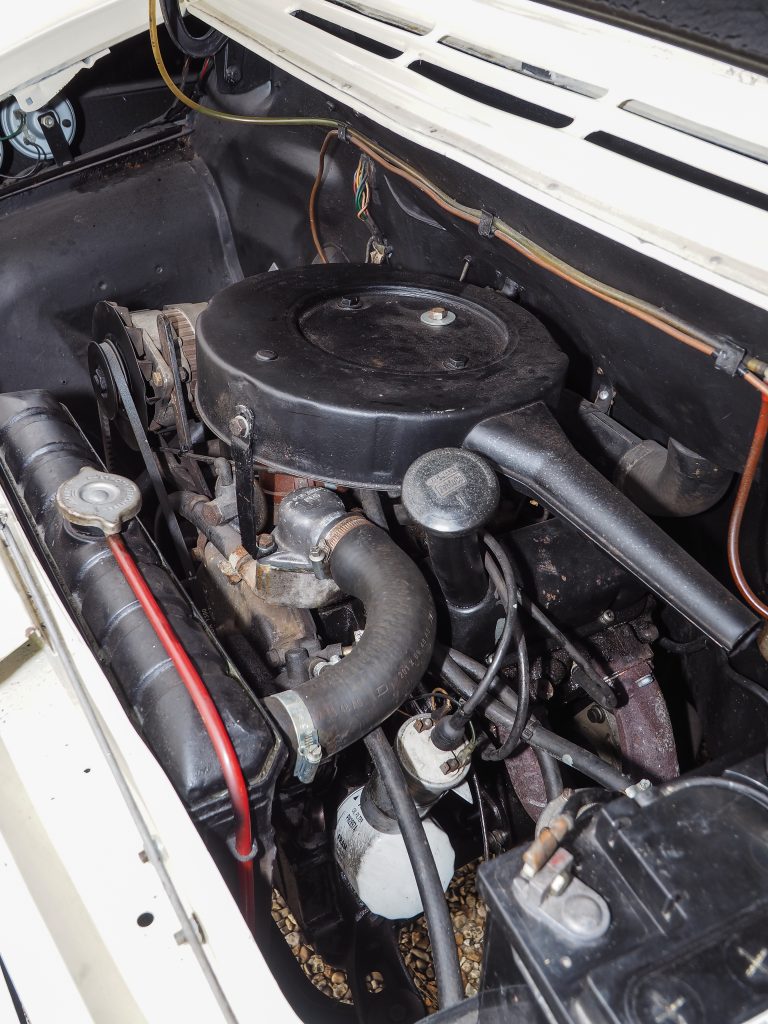
Stateside Outside
The other key thing that made the Transit so different was, of course, its external appearance. With ‘encouragement’ from their American counterparts and bosses, Ford GB’s team took styling cues from the stateside Mk2 Ford Econoline. Although not introduced until 1969, this would have been at concept stage appearance-wise. Three prototype Transits were ready by January 1964, and extensive testing at home and abroad followed. In Britain, the M2 (then with no speed limit) was a regular test-route. Speeds of up to 90mph, and regular steady 70mph runs during night-time tests being common.
Inevitably, these attracted attention from the Kent Constabulary, though encounters about alleged driving infringements were soon replaced by friendly chats over tea about how the project was progressing. There was also testing overseas, specifically on the famous rough-paved roads of Belgium and into Finland and Portugal to test the new van’s abilities to cope with extreme cold and heat.
Transit Production starts
Eventually, the first Transits rolled off the assembly line in August 1965, with sales starting in October. 1965 was in fact rather busy for Ford, as March saw the launch of the D-Series light truck in place of the Thames Trader. The D-Series was another hugely significant vehicle for Ford. From the start, Ford offered both SWB and LWB versions. The latter, with its twin rear wheels and 261cu.ft capacity, soon became known as the “35cwt Transit”. It was, though, also available with 25 and 30cwt payload capacity.
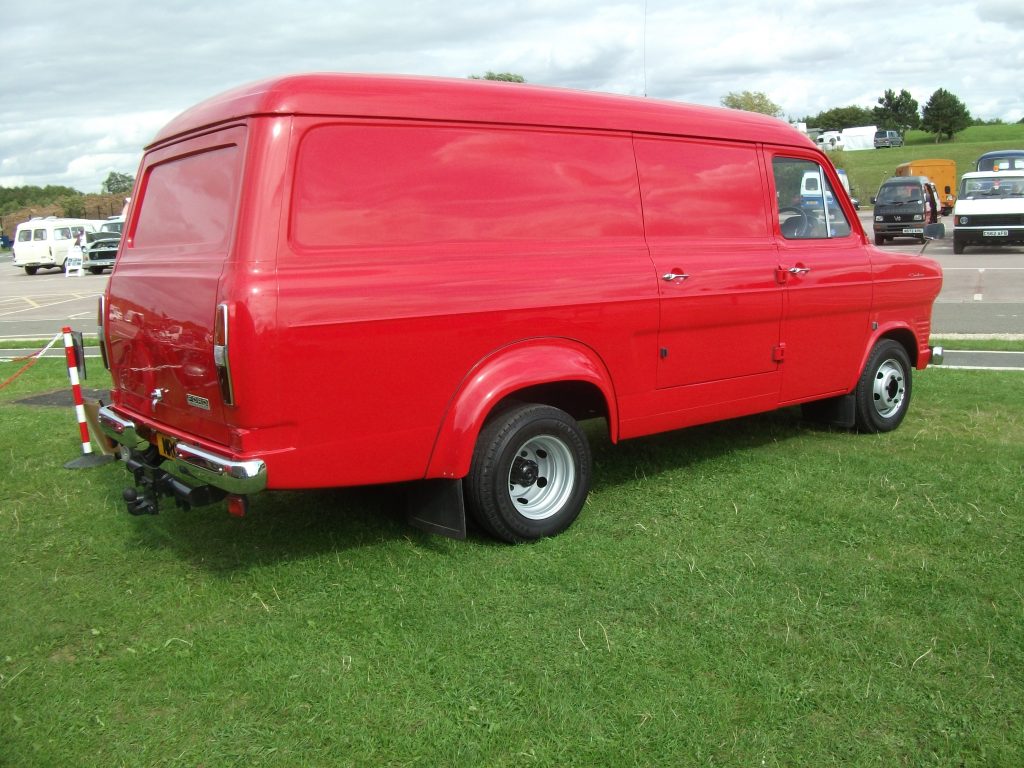
A wide range of body styles was offered in both lengths including panel vans, pick-up trucks, chassis/cabs, crew buses and a full factory-built minibus which was fully compliant with PSV regulations for carrying fare-paying passengers. There was also of course the choice of petrol Pricing was competitive too, with the cheapest SWB petrol van with no options and a 12cwt payload retailing at just £542. That was the full price too; vans were not subject to Purchase Tax. The dearest ex-factory vehicle was, unsurprisingly, the LWB 15-seat minibus with the custom luxury pack, costing £997, plus because passenger vehicles did attract Purchase Tax, an extra £159 on top.

Well received
Unsurprisingly, the Transit was extremely well received by the press and buyers, with the former noting that with the D-Series also being new, Ford now had new offerings right across the commercial vehicle range; the only exception being the car-derived 5/7cwt van which was still based on the Ford Anglia saloon; that would be replaced by the 6/8cwt Mk1 Escort van from early 1968.
The Transit soon started attracting fleet buyers – Ford’s sales and marketing operation was always extremely good at ‘doing deals’ with bulk purchasers. The first bulk purchase was by SEGAS, the South Eastern Gas Board, who ordered 95 LWB vans in September 1965; yes, that was a month before the model’s official launch. The London Evening News also took a large batch; this was significant because of the high profile these vans had delivering newspapers around the capital, but also because the Evening News had hitherto used Bedford CAs.
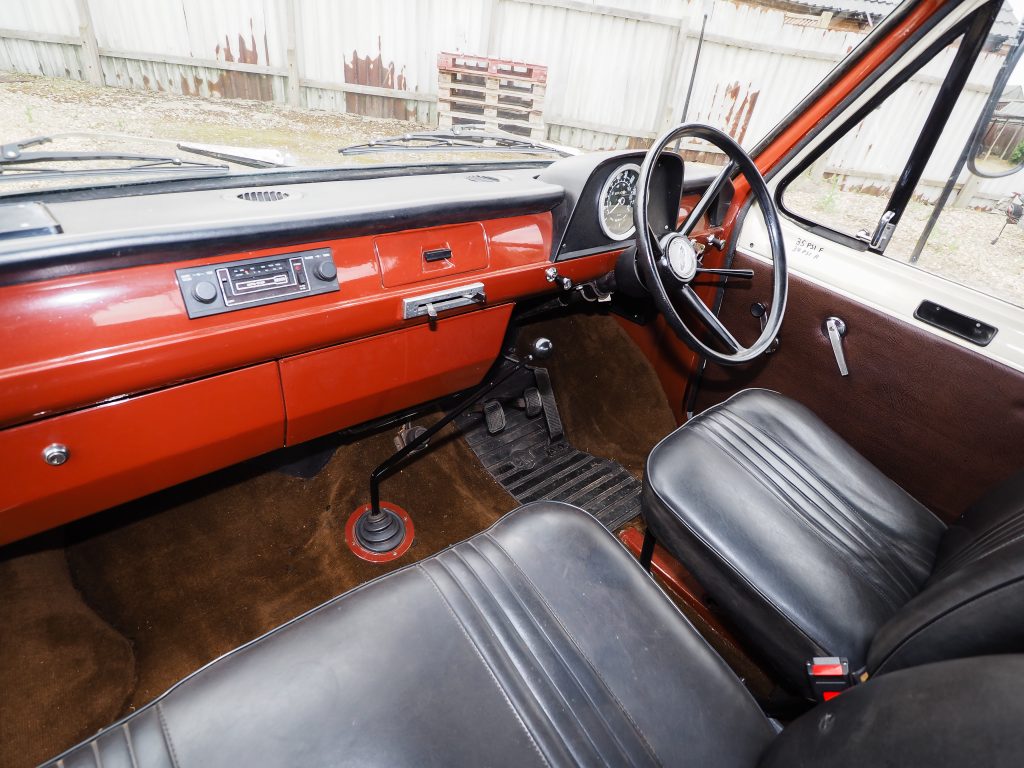
Early improvements
Improvements came thick and fast too. In 1966 the high-capacity parcel van (or space van) was offered in 29cwt and 39cwt versions. This was aimed at those needing to move light but bulky loads, with an early fleet order coming from Associated British Foods for use as Sunblest delivery vans. These were a common sight throughout Southern England, and as a result the parcel van soon became known as the bread van. The ‘bread van’ soon became extremely popular with a wide range of users, not least because it was pretty-much without competition.
Other early options included Borg-Warner automatic transmission from July 1967, and as already noted from January 1968 buyers could choose a 2litre version of the V4 engine instead of the 1.7. Then, in October 1969 the 12cwt Transit was upgraded to 14cwt, and the 17cwt to 18cwt. We will look at all this in more detail, along with subsequent developments and the arrival of what most people considered to be the Mk2 Transit, next month.
To read more articles like this every month, subscribe to Classic & Vintage Commercials magazine by subscribing here. And find the latest news, exclusive looks and more at the CVC website here.


